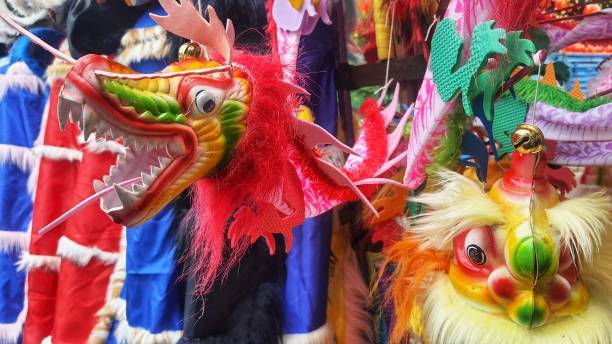Dragons are iconic in many cultures around the world, with different meanings and characteristics in different regions. In particular, their depictions and roles vary widely between the East and the West. In this article, we take a closer look at the symbolism of dragons in Eastern cultures, Western cultures, and beyond.

Oriental DragonDragons play a very important role in Eastern cultures, especially in China, Japan and Korea, and are often symbolized as natural, powerful and divine beings. Dragons in these regions are generally seen as good and benevolent beings, and are often credited with bringing good fortune to people.Chinese Dragon (龍, rong) In Chinese legend, the dragon is a symbol of the emperor and represents power and authority. Dragons are often worshipped as the bringer of rain, good harvests and harmony in nature. Dragons are a link between heaven and earth and play an important role as part of the five elements philosophy. In particular, dragons are closely associated with water and are the guardians of rivers and lakes.Japanese Dragons (竜, 竜) Japanese dragons have also been influenced by China, and are often depicted as gods of the sea or water. For example, Yamata no Orochi, which appears in Japanese mythology, is a giant snake-like monster with eight heads, and is defeated by a god named Susanoo. In this way, Japanese dragons are deeply connected to nature, and are often depicted as beings that are defeated by heroes, but at the same time, they are also worshiped as beings that protect water sources.Korean Dragon (용, Yong) In Korea, the dragon is primarily a symbol of water and agriculture, and is worshipped as a bringer of rain. Korean dragons are believed to be benevolent and to bring blessings to people, and are sometimes depicted in mythology as beings with the ability to ascend to heaven and become sages.Western DragonOn the other hand, in contrast to the Eastern image, dragons in the Western world are often portrayed as destructive and evil. In medieval European legends, dragons are often depicted as enemies to be defeated by brave knights.Dragons in Medieval Europe In Medieval Europe, dragons were treated as symbols of evil. They were depicted as fire-breathing creatures that destroyed villages and castles, and the legend of St. George slaying a dragon is particularly famous. Western dragons were feared as creatures with large wings that could fly in the sky and breathe fire. Dragons also often appeared as guardians of treasure, and there are many stories of brave people reclaiming it.Dragons in Norse Mythology Dragons are also depicted as powerful and destructive in Norse mythology. For example, the famous dragon Fafnir had a fierce hatred for anyone who tried to steal the gold he protected. Norse dragons play an important role in myths and poetry as symbols of greed and jealousy.Dragons in Other RegionsDragon legends are found throughout Asia and Europe, and in each culture the dragon has different symbolism and roles.The Nagas of India In Hindu mythology, the Nagas are known as snake gods, sometimes depicted as dragons. Nagas are worshipped as gods of earth and water, and are the guardians of rivers and lakes. They are often depicted as granting wisdom and spiritual powers to humans.Quetzalcoatl of the Aztec Civilization The Aztec civilization of Central and South America worshipped a feathered serpent called Quetzalcoatl. Quetzalcoatl was the god of creation and knowledge, and was worshiped as a being that brings fertility. In this way, the image of dragons in Central and South America is close to that of Eastern dragons, and is depicted as a being connected to nature and creation.conclusionDragons are depicted as powerful and symbolic beings in many cultures, but their meanings and roles vary greatly from culture to culture. In Eastern cultures, dragons are depicted as benevolent and harmonious beings, while in Western cultures they are often depicted as destructive and fearsome. Other regions also have their own unique dragon legends based on their own cultural backgrounds. Thus, dragons are not just mythical creatures, but symbolic beings that reflect cultural diversity.
